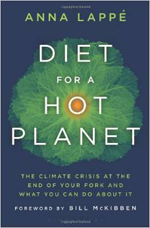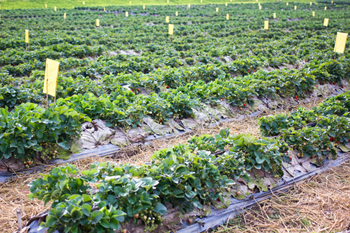The choices we make at the grocery store can help reduce climate change.
LAPPE: “I was actually shocked personally when I discovered how much of a connection there is between food and climate.”

That’s Anna Lappé, author of a book called Diet For a Hot Planet: The Climate Crisis At The End Of Your Fork And What You Can Do About It.”
From clearing forests for agriculture to manufacturing synthetic fertilizers, using energy-intensive farming, and meeting a rising demand for meat – our complex food system accounts for almost one-third of global greenhouse gas emissions. But Lappé says there is a silver lining.

LAPPE: “One of the best things about talking about that food and climate connection is that it is something we can touch and taste. It is something we can do something about on a daily basis.”
About half of the grain produced around the world today is being used to feed livestock instead of people.
LAPPE: “And so it’s a way of producing food that’s very energy-intensive, that uses up a lot of crops and feed.”
So Lappé suggests shifting to a more plant-centered diet.
People can also consider how their food was grown. She says organic practices mean less synthetic fertilizers, agrochemicals, and energy use.
LAPPE: “So by choosing organic foods, we’re choosing to support farms that are having that smaller climate footprint.”
Lappé’s message is upbeat. She says what’s healthiest for our bodies is also best for the planet.
Reporting credit: ChavoBart Digital Media.
Photo: Organic strawberry farm (copyright protected).
More Resources
Diet For A Hot Planet
SmallPlanet website